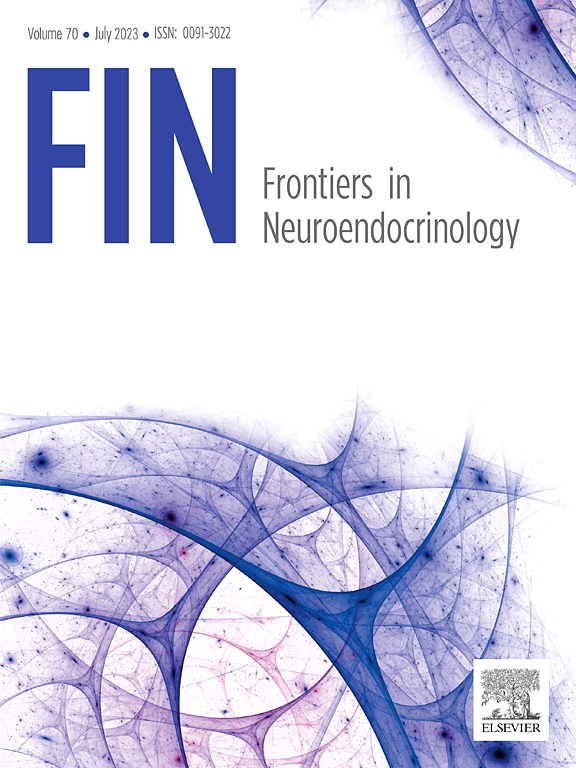How the diffuse neuroendocrine system shapes health, homeostasis, and cancer
IF 6.7
1区 医学
Q1 ENDOCRINOLOGY & METABOLISM
引用次数: 0
Abstract
The diffuse neuroendocrine system (DNES) consists of dispersed neuroendocrine (NE) cells that bridge nervous, immune, and endocrine pathways across organs. Evolutionarily, DNES traces to primitive metazoans where single cells combined neural and immune roles, later diversifying into specialized vertebrate NE cells. Hallmark traits include dense-core granules, amine metabolism, “salt-and-pepper” chromatin, and regulation by ASCL1, NEUROG3, and INSM1. Remarkable plasticity allows immune and epithelial cells to acquire NE features under stress, while carcinomas exploit this program to form aggressive neuroendocrine tumors (NETs) and resist therapy. Canonical neuroimmune circuits, the Vagus-driven inflammatory reflex and hypothalamic–pituitary–adrenal stress axis, illustrate DNES coordination of systemic responses. Clinically, DNES-derived neoplasms span multiple organs, produce diverse hormonal syndromes, and are managed with somatostatin analogues, epigenetic drugs, and emerging immunotherapies. Recognizing DNES as a diffuse, integrative regulatory network clarifies mechanisms of chronic inflammation and cancer evolution and offers novel therapeutic entry points for disorders ranging from asthma to pancreatic neuroendocrine carcinomas.
弥漫性神经内分泌系统如何影响健康、体内平衡和癌症
弥漫性神经内分泌系统(DNES)由分散的神经内分泌(NE)细胞组成,这些细胞在神经、免疫和内分泌通路之间架起桥梁。从进化的角度来看,DNES可以追溯到原始的后生动物,其中单个细胞结合了神经和免疫功能,后来分化成专门的脊椎动物NE细胞。标志性特征包括致密核颗粒、胺代谢、“盐和胡椒”染色质以及ASCL1、NEUROG3和INSM1的调控。显著的可塑性使免疫细胞和上皮细胞在压力下获得NE特征,而癌细胞利用这一程序形成侵袭性神经内分泌肿瘤(NETs)并抵抗治疗。典型的神经免疫回路,迷走神经驱动的炎症反射和下丘脑-垂体-肾上腺应激轴,说明了DNES系统反应的协调。临床上,dnes来源的肿瘤跨越多个器官,产生多种激素综合征,并通过生长抑素类似物,表观遗传药物和新兴免疫疗法进行治疗。认识到DNES是一个弥漫的、综合的调节网络,阐明了慢性炎症和癌症演变的机制,并为从哮喘到胰腺神经内分泌癌等疾病提供了新的治疗切入点。
本文章由计算机程序翻译,如有差异,请以英文原文为准。
求助全文
约1分钟内获得全文
求助全文
来源期刊

Frontiers in Neuroendocrinology
医学-内分泌学与代谢
CiteScore
13.30
自引率
6.80%
发文量
62
审稿时长
68 days
期刊介绍:
Frontiers in Neuroendocrinology (FIN) publishes a wide range of informative articles including comprehensive reviews, systematic reviews, opinion pieces, and meta-analyses. While the majority of reviews are invited, we also embrace unsolicited reviews and meta-analyses, as well as proposals for thematic special issues, provided they meet our rigorous quality standards. In addition, we encourage authors to submit commentaries that concisely present fresh ideas or offer further analysis to delve deeper into the implications of an article published in our journal.
 求助内容:
求助内容: 应助结果提醒方式:
应助结果提醒方式:


